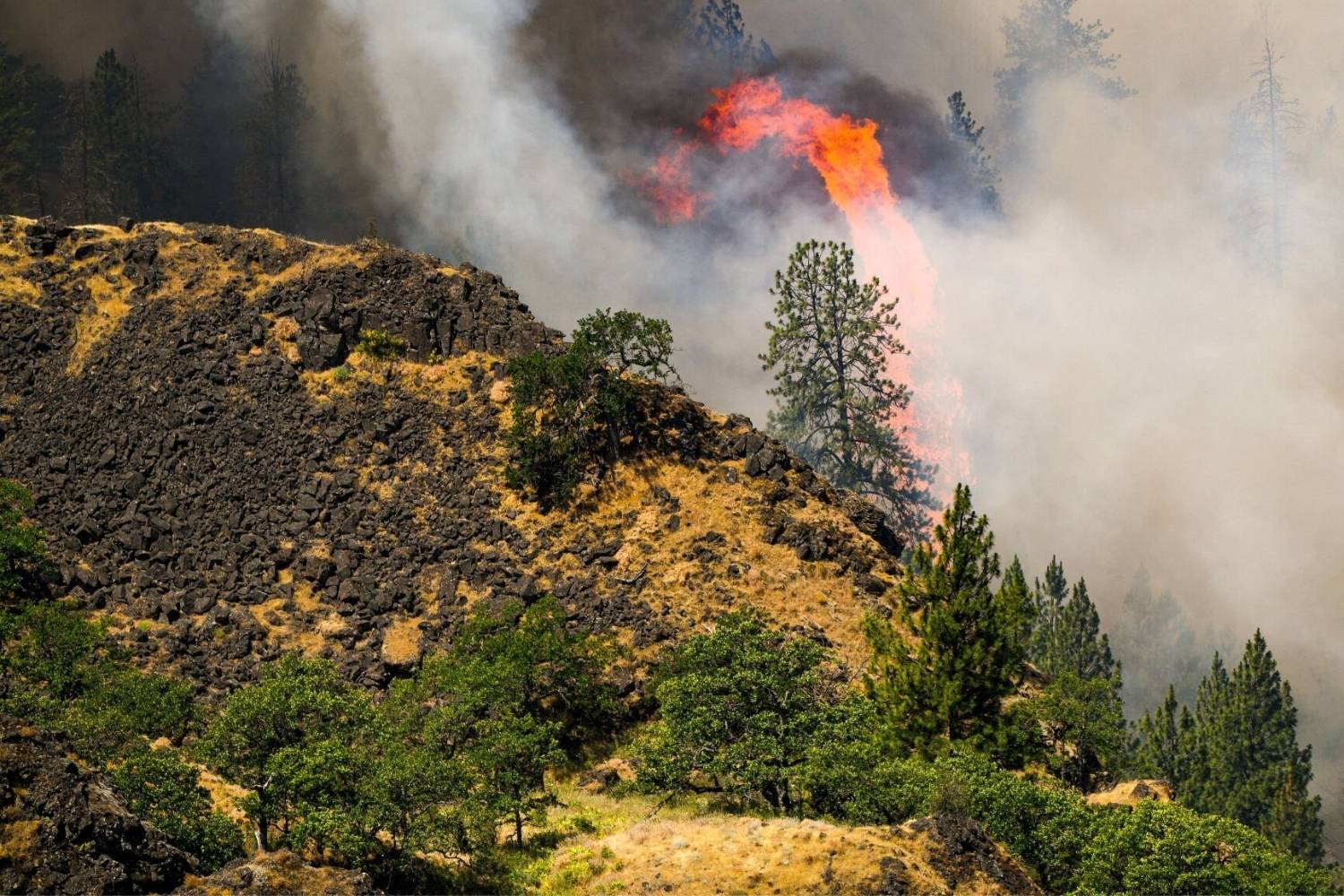
What caused the Rowena Fire? The Rowena Fire ignited on August 5, 2014, in the scenic Columbia River Gorge, Oregon. Lightning sparked the blaze, which quickly spread due to dry conditions and strong winds. The fire scorched over 3,600 acres, threatening homes and wildlife. Firefighters from multiple agencies battled the flames for weeks, finally containing it on August 24. The Rowena Fire serves as a stark reminder of nature's power and the importance of wildfire preparedness. Understanding the causes and impacts of such fires helps communities stay safe and resilient. Let's dive into 15 fascinating facts about this significant event.
The Rowena Fire: A Brief Overview
The Rowena Fire, a significant wildfire in Oregon, left a lasting impact on the region. Understanding the details of this event can provide insights into wildfire behavior, prevention, and response.
The Start of the Rowena Fire
Wildfires often have dramatic beginnings. The Rowena Fire was no exception.
- The Rowena Fire ignited on August 5, 2014. A hot, dry summer created perfect conditions for a wildfire to start and spread rapidly.
- The fire began near the small community of Rowena, located in the Columbia River Gorge. This area is known for its scenic beauty and diverse ecosystems.
The Spread and Impact
Once a wildfire starts, its spread can be influenced by various factors, including weather and terrain.
- Strong winds played a significant role in the rapid spread of the Rowena Fire. Gusts of up to 30 miles per hour pushed the flames across the landscape.
- The fire scorched over 3,600 acres of land. This included forested areas, grasslands, and some residential properties.
- Evacuations were ordered for several communities. Residents had to leave their homes quickly, taking only essential belongings.
Firefighting Efforts
Battling a wildfire requires coordination, resources, and bravery.
- Over 600 firefighters were deployed to combat the Rowena Fire. These included local crews, state resources, and federal assistance.
- Aerial support was crucial in fighting the fire. Helicopters and planes dropped water and fire retardant to slow the spread of the flames.
- Firefighters faced challenging conditions, including steep terrain and thick smoke. These factors made their work even more dangerous and demanding.
Environmental and Economic Consequences
Wildfires can have lasting effects on both the environment and the economy.
- The Rowena Fire caused significant damage to local ecosystems. Wildlife habitats were destroyed, and the landscape was altered.
- The fire's aftermath included soil erosion and water quality issues. Burned vegetation left the soil exposed, increasing the risk of landslides and sediment runoff.
- The economic impact was also substantial. Costs included firefighting efforts, property damage, and lost revenue from tourism and local businesses.
Recovery and Lessons Learned
After a wildfire, communities and ecosystems begin the long process of recovery.
- Reforestation efforts began soon after the fire was contained. Planting native species helped stabilize the soil and restore habitats.
- The Rowena Fire highlighted the importance of wildfire preparedness. Communities in fire-prone areas have since improved their emergency plans and communication systems.
- Fire prevention measures were also enhanced. This includes better management of vegetation and public education on fire safety.
The Human Element
Wildfires affect more than just the land; they impact people's lives in profound ways.
- The Rowena Fire brought communities together. Neighbors supported each other, and volunteers provided aid to those affected by the fire. This sense of solidarity helped many people cope with the disaster.
Understanding the Rowena Fire helps illustrate the complex nature of wildfires and the importance of preparedness, response, and recovery efforts.
Final Thoughts on the Rowena Fire
The Rowena Fire left a lasting impact on both the environment and the community. It was a stark reminder of nature's power and the importance of preparedness. The fire scorched thousands of acres, destroyed homes, and disrupted lives. However, it also showcased the resilience of the affected communities and the bravery of firefighters who risked their lives to contain it.
The aftermath saw a significant effort in rebuilding and restoring the damaged areas. Lessons learned from this disaster have led to better fire management practices and increased awareness about fire safety. The Rowena Fire serves as a powerful example of how communities can come together in times of crisis, highlighting the importance of unity and support.
Understanding the facts about the Rowena Fire helps us appreciate the challenges faced and the progress made in wildfire management. Stay informed, stay prepared, and support your local fire services.
Was this page helpful?
Our commitment to delivering trustworthy and engaging content is at the heart of what we do. Each fact on our site is contributed by real users like you, bringing a wealth of diverse insights and information. To ensure the highest standards of accuracy and reliability, our dedicated editors meticulously review each submission. This process guarantees that the facts we share are not only fascinating but also credible. Trust in our commitment to quality and authenticity as you explore and learn with us.
